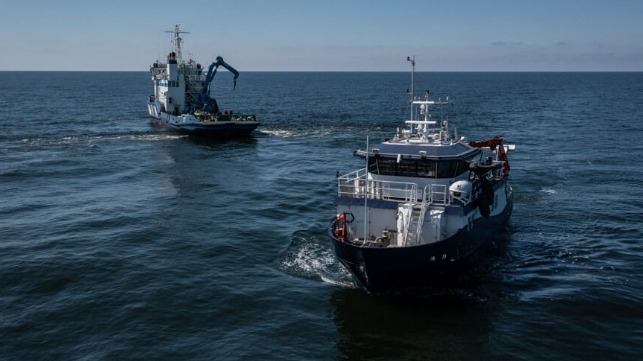Investigators Return to Estonia Wreck Again Seeking Conclusive Answers

Marine investigators are set to return to the wreck of the MV Estonia ferry on a survey mission that aims to gather more insights that could help reach conclusive evidence on the cause of one of the world’s deadliest peacetime tragedies in the high seas. Nearly 30 years after the ferry went down in the Baltic in 1994 with the loss of 852 lives, investigators agreed in 2021 to reopen the search after new details were provided on the condition of the wreck. A 2020 survey raised further questions about the cause of the disaster.
Having released preliminary findings in January that ruled out a collision or explosion, and reaffirmed the original determination that the disaster was caused by a faulty bow door that wrenched off in a heavy storm, investigators are hoping for more convincing answers. They are planning to conduct a detailed survey and analysis of areas connected to the bow including the lashings and different openings such as doors, vents, and hatches, among others.
The Estonian Safety Investigation Bureau (OJK) announced that marine investigators from the country in collaboration with Swedish Accident Investigation Authority (SHK) and facilitated by Finnish authorities will return to the Estonia site to carry out another round of surveys centered on the acquisition of different samples and surveying of the car deck. Unlike in past surveys, the investigators also intend to recover the bow ramp from the bottom of the sea where it was discovered detached from the ship and badly damaged.
In the current mission, the survey vessel Viking Reach is set to depart the Swedish port of Karlskrona on July 18 and arrive at the wreck site the following day with the efforts, including transfers, expected to last 7 to 8 days depending on weather conditions. Norwegian company Reach Subsea will be the contracting partner for the marine works.
Apart from personnel from the Estonian and Swedish authorities, two representatives of the survivors of the accident will attend the marine surveys. The underwater surveys will be solely performed with unmanned remotely operated vehicles (ROVs). The authorities have said they have no intentions to send divers down 80 meters to the seabed.
A survey of the car deck remains of particular interest to the investigators. The preliminary report by Estonian, Swedish, and Finnish authorities, reaffirmed the theory that the ferry sank after its bow door locks failed in a storm flooding the decks in just 20 minutes.
The investigators believe the current round of surveys could help in advancing the findings. The objective of the car deck survey will be to receive information about the state of the cargo. They would like to obtain information looking at the lashings and status of different openings such as doors, vents, and hatches.
Using high-tech cameras and ROVs from Reach Subsea, the investigators hope to recreate 3D models of the car deck that will provide a clear picture of among others the position of the cargo, and intermediate doors that were opened or closed with the ultimate goal being to unravel what could have caused the bow door to detach.
After concluding the onsite activities, the team will lift the bow ramp that will be transported to Paldiski South Harbor in Estonia for further examination. The ramp was discovered detached from the wreck in July 2021 during previous surveys, which makes it easier to lift it and transport it aboard Viking Reach, a research/survey vessel built in 2009 sailing under the flag of Norway.
When the bow ramp reaches Estonia, authorities intend to undertake a thorough investigation including metal analysis, laser scanning, and chemical analysis, part of which will help reach a conclusive determination to affirm the earlier ruling that the disaster was not a result of a collision or explosion.
The authorities are hoping the current mission will help them reach closure for the ship’s sinking investigation that has been running for three decades. Last year, yet another survey was carried out in which a submersible robot took more than 40,000 photogrammetric images of the wreck and the ship’s car deck.
Despite the official determination on the cause of the disaster, relatives of the victims continue to hold contrary views. They have continued to believe in the likelihood of an explosion or a collision with a submarine as having been the main cause of the disaster. They have even organized private expeditions to the wreck to try and find answers.
